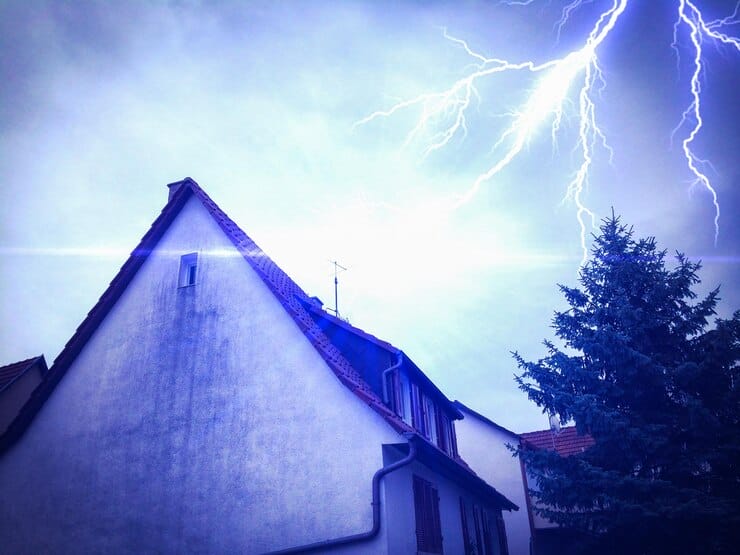A storm shelter is a crucial investment that offers invaluable protection and reassurance for you and your family during severe weather events. To ensure your storm shelter remains functional, effective, and safe for years to come, it is imperative to perform regular maintenance on the structure. Whether you have an underground storm shelter, safe room, underground garage unit, or concrete storm shelter, proper care and upkeep will not only extend the lifespan of your shelter but also provide peace of mind, knowing it is ready for use when needed.
In this blog post, we will discuss essential maintenance tips for various storm shelter types, keeping them in optimal condition to provide a secure refuge during extreme weather conditions. From cleaning and inspecting your shelter to addressing issues like ventilation, drainage, and structural integrity, these guidelines will help you maintain your investment and ensure your family’s safety during severe storms.
We will also emphasize the importance of seeking professional guidance and assistance from experienced providers for storm shelter maintenance. Their expertise in installing and maintaining storm shelter systems ensures that you receive informed advice and support to keep your shelter in optimal condition.
Prepare for the unpredictable by maintaining your storm shelter effectively and efficiently. With Texas Storm Shelter Guy’s help, you can have confidence in your shelter’s safety, longevity, and performance, providing essential protection when you and your loved ones need it most.
Essential Maintenance Tips for Various Storm Shelter Types
While all storm shelters serve a similar purpose, different types require specific maintenance practices to ensure optimal performance and safety during severe weather events. In this section, we will outline essential maintenance tips for underground storm shelters, safe rooms, underground garage units, and concrete storm shelters.
Inspecting and Cleaning Your Storm Shelter
Regular inspection and cleaning are essential for all storm shelter types, helping you identify any potential issues and maintain a safe, sanitary environment. Some key steps include:
- Inspect for Damage: Check your storm shelter’s structure for cracks, rust, or other signs of damage that could compromise safety. Address any issues immediately to prevent further deterioration.
- Clean and Decontaminate: Ensure the cleanliness of your shelter by removing dirt, debris, and any pest infestation. Clean and sanitize surfaces, ventilation systems, and entry points regularly to prevent mold and mildew growth.
- Monitor Seals and Gaskets: Check door seals and gaskets for integrity to prevent water and debris infiltration. Replace if damaged or worn to ensure a secure seal.
Maintaining Ventilation Systems and Air Quality
Proper ventilation in your storm shelter is crucial to maintain clean and breathable air during an emergency. Here’s how to keep your ventilation systems functioning effectively:
- Check Ventilation Mechanisms: Regularly inspect vents and fans to ensure they are free from obstructions and functioning correctly.
- Clean and Replace Filters: Remove, clean, or replace your shelter’s air filters as needed. Dirty filters can reduce airflow and air quality, posing a risk to your family’s health.
- Test Oxygen Supply Systems: If your storm shelter is equipped with an oxygen supply system, examine it regularly and replace oxygen tanks and air supplies to ensure their effectiveness during emergencies.
Addressing Drainage and Humidity Control
Proper water drainage and humidity control are essential for underground storm shelters and underground garage units, preventing moisture damage and maintaining a safe environment. Follow these guidelines:
- Examine Drainage Systems: Inspect your storm shelter’s drainage system for blockages and signs of wear. Clean and repair the system as needed to facilitate effective water drainage.
- Dehumidify the Space: Utilize dehumidifiers or moisture-absorbing products to control humidity levels within your shelter, preventing mold and mildew growth and protecting your family’s health.
- Waterproofing Solutions: To extend the life of your underground storm shelter, consider applying a waterproofing sealant to prevent water infiltration and structural damage.
Upkeep of Lighting and Electrical Systems
A well-lit and functional electrical system provides comfort and security during emergency situations. To maintain your storm shelter’s electrical components, follow these steps:
- Test Lighting: Regularly test your shelter’s lighting to ensure it operates properly. Replace any burnt-out bulbs or faulty fixtures as needed.
- Inspect Electrical Wiring: Check the wiring in your storm shelter for signs of wear or damage, and address any issues immediately to avoid electrical hazards.
- Check Power Supplies: Confirm that your shelter’s power source, such as backup generators or battery-operated systems, is functioning efficiently. Test and maintain these systems regularly to ensure reliable power during emergencies.
Seeking Professional Guidance for Storm Shelter Maintenance
While performing general maintenance tasks on your storm shelter is essential, partnering with a reputable and experienced storm shelter provider for comprehensive maintenance services is invaluable. Their expertise in storm shelter installation and maintenance ensures that your shelter receives the best care, prolonging its lifespan, and enhancing its safety and effectiveness during severe weather events.
We can assist you in identifying potential issues, providing professional solutions, and offering informed advice on maintaining your storm shelter in optimal condition. By enlisting their services, you can have confidence in the safety and functionality of your shelter when you and your family need it most.
Safeguard Your Investment and Your Family’s Safety Through Proper Storm Shelter Maintenance
Performing regular maintenance on your storm shelter, whether it’s an underground storm shelter, safe room, underground garage unit, or concrete storm shelter, is key to ensuring its safety, functionality, and longevity. By following these essential maintenance tips and seeking professional guidance from experienced providers, you can have peace of mind knowing that your shelter will be dependable and effective when severe weather strikes.
Don’t let neglect compromise the protection your storm shelter offers. Begin implementing these maintenance tips today and secure the safety of your loved ones during extreme weather events. If you need assistance, reach out to Texas Storm Shelter Guy for expert storm shelter services designed to meet your unique needs.

